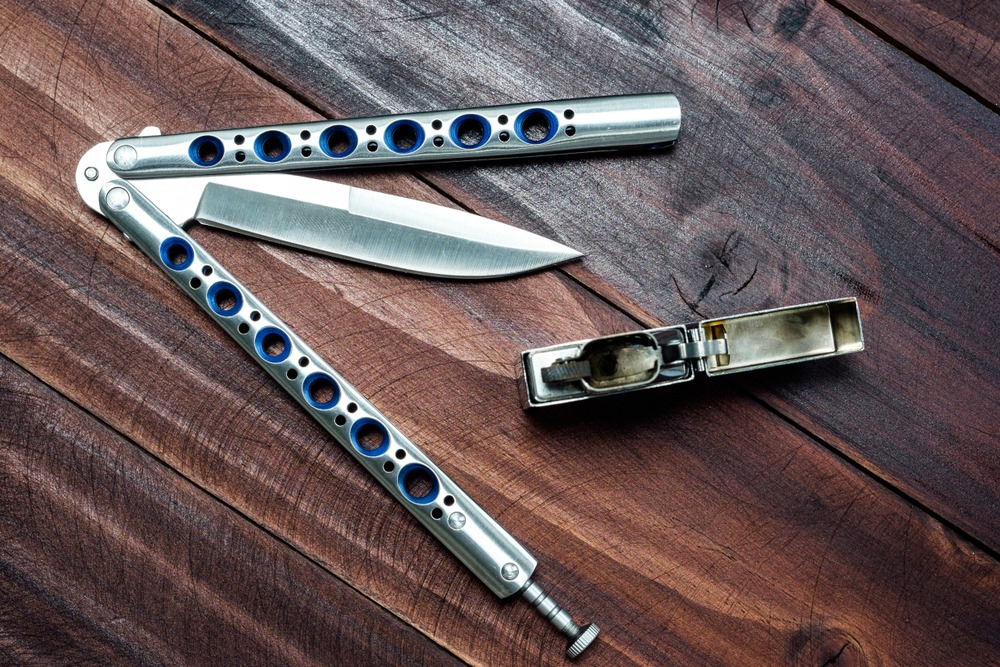As we touched on earlier, although these knives are potentially deadly, they’re incredibly fun and rewarding to master. Here you’ll find some of the foundational beginner tricks for opening and closing a butterfly knife. Let’s take a look.
Butterfly Knife Tricks for Beginners – The Basic Open Trick
The first thing to take note of is which handle is the safe handle. This is the handle on the unsharpened side of the blade (it’s also the handle without the latch coming out its base). Hold the knife in your right hand so that the safe handle is on the right side. Use your thumb to hold the safe handle securely, but not overly tight.
Tilt your wrist to the left and flick it back to swing the other handle and the balisong’s blade over the back of your hand (on the finger-side of your knuckles). You should see the blade pointing straight forward and the other handle dangling over the back of your hand. Now, rotate the knife in your hand.
Flick your wrist to flip the non-safe handle over your hand. It should now be making contact with the blade again. The unsharpened side of the blade will be resting against the back of your finger/hand now. Now you’re going to need to flip the non-safe handle back into your hand.
Move your thumb out of its path as you flick your wrist again. As the non-safe handle lands, use your thumb to secure it again. You can also do this opening trick horizontally. Just start from a hand position that’s 90° from the first one.
Quick Tip:
Bear in mind that this is going to take quite a bit of time to get right. So break it down slowly into the steps above and practice your way through each of them. Build up muscle memory before trying to increase the trick’s speed. To close the knife, start by holding the safe handle. Flip the knife over the back of your hand (non-safe handle and the blade).
Rotate the knife 180° by twisting the safe handle. As it reaches the full rotation, flip the handle over your hand again. The blade will be pointing straight out and away from your hand, and the other handle will be dangling over the back of your hand. Move your thumb out of the closing motion’s way as you flip the non-safe handle and blade back into their closed positions.
There you go! This is probably the most important trick to learn. Despite being quite foundational, it looks and feels impressive once you’ve built up a little speed. Don’t go too fast too soon, especially if you haven’t built up the necessary muscle memory. Practice each step – one at a time – and piece them together gradually.
Attachments
------


